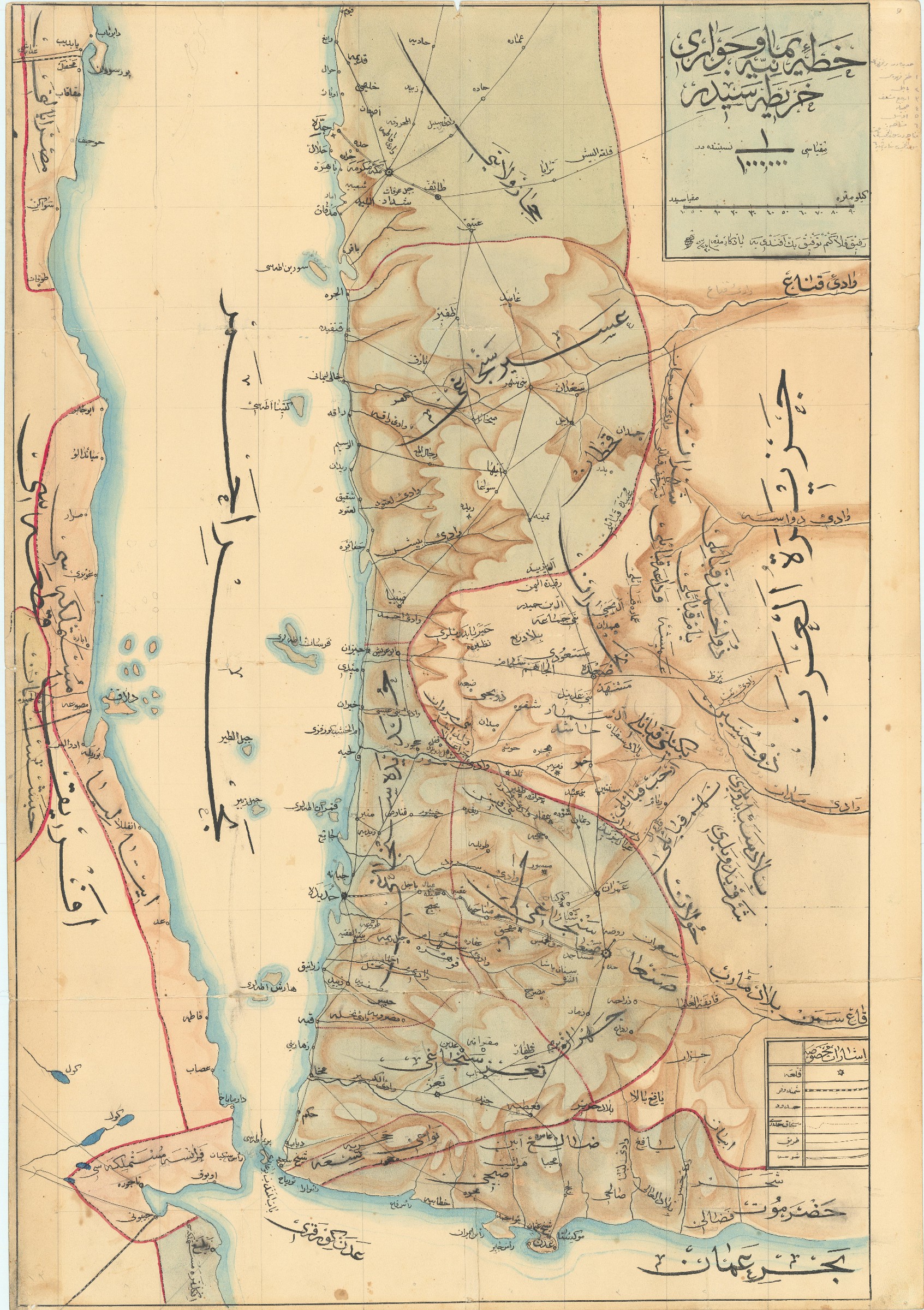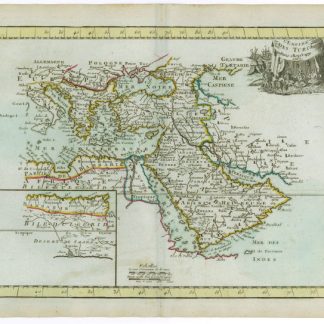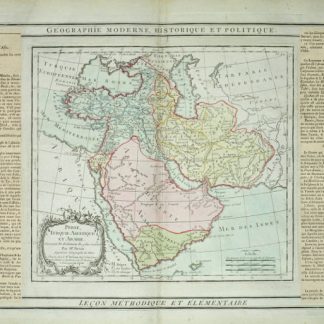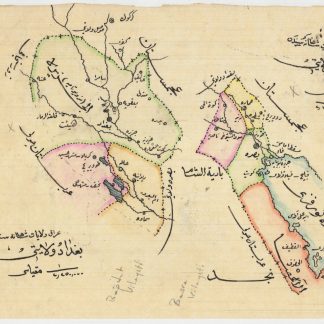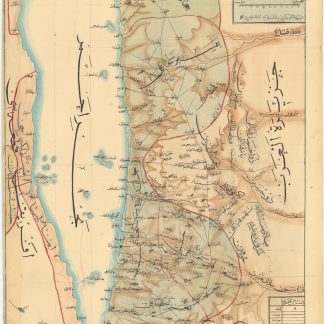Unique manuscript map of the Yemen Vilayet, drawn during the Yemeni rebellion of 1911
Hitta-i Yemaniyye ve civari haritasidir [Map of the country of Yemen and its environs].
Hand-drawn and hand-coloured Ottoman Turkish map, 536 x 778 mm. Scale 1:1,000.000.
€ 28.000,00
Unique hand-drawn map of western Yemen, southern Arabia and the southern Red Sea, reaching from Aden, Djibouti's Gulf of Tadjoura, and the Bab-el-Mandeb in the south and as far north as Mecca, Jeddah, and Rabigh. The legend identifies the various symbols used in the map to show features of the land: fortresses, railroads ("simendüfer", chemin-de-fer), international and Sanjak borders, simple roads, and causeways ("sose", chaussée). Apart from a few miles of rails inland from Hodeidah, no railways are shown in Arabia (the Hejaz railway had reached Medina in 1908 and not proceeded further), but several tracks are illustrated on the African side, some dubious. Dated 20 March 1327 (2 April 1911 CE), the map is signed with an unidentified monogram and inscribed as a gift to "Tevfik Bey Efendi, my comrade in misfortune" ("Refik-i felaketim Tevfik Beyefendi'ye yadigarimdir"). In the right margin, a series of pencil notes enumerate the various konaks (one-day travel stage posts) of the laborious land journey from Hodeidah to Sana'a.
The Sublime Porte had long sought to assert its authority in Yemen, and in 1872 had succeeded in establishing the Yemen Vilayet as an administrative division of the Ottoman Empire, though the vast area proved almost impossible to rule and continued to be plagued by insurrections. In early 1911 the Imam of Yemen, frustrated by the lack of progress in negotiations that had lasted for fully five years, began another revolt against the Ottomans: armed rebel bands arrived in Sana'a on 12 January 1911 and took over the city. The rebellion collapsed near the end of April, followed in October with the signing of the Treaty of Daan, which made Yemen a vassal state of the Ottoman Empire. It is very likely that the draughting of the present map was occasioned by the various Ottoman administrative and military operations taking place in Yemen during early April 1911.
Traces of folds which show a few insignificant paper and edge flaws. Drawn on high-quality Austrian "carta di disegno" paper with drystamp in one corner.

